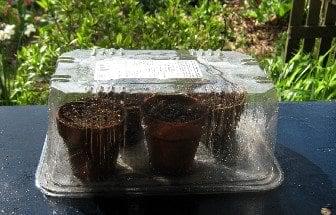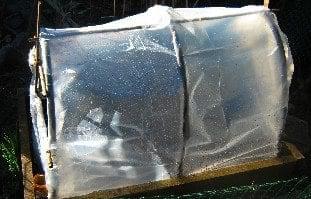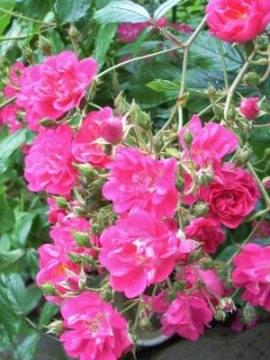Spring weather in the Willamette Valley is unpredictable. It can be warm enough to fool you into planting tomato starts in the morning and cold enough for snow by the afternoon. A well placed garden cloche can be the difference between life and death for tender transplants. Even people with the good fortune to have their own greenhouse can benefit from cloches.
Garden cloches are a sensible way to protect little seedlings until warmer weather settles in. Cloches can be moved from seed bed to seed bed as the plants develop. Tiny cloches are great for nurturing fresh sprouts and keeping them safe from pests until they’re big enough to defend themselves.
Cloches are easy to make from recycled materials with very little extra effort. A stout box knife to cut the bottom off of a plastic container or to punch ventilation holes in the tops of salad servers is the cloche maker’s best friend.
Recycled Items that Make Good Garden Cloches
- Liter-sized pop bottles
- Salad servers
- Alfalfa sprout containers
- Plastic bins
- Water jugs
- Milk jugs
- 5-gallon “squares” (for carrying water)
- Large plastic mixing bowls
- Plastic hula hoops
- Large plastic bags
- Branches
- Bamboo
- Plumbing parts
This list is only limited by your own imagination.
Cloche Requirements

Light: A successful cloche should be made from a material sunlight can penetrate, like glass or clear plastic. It should be easy to lift so you can water your baby plants underneath.
Air: Ventilation is vital to a healthy cloche. Professional greenhouses have fans that circulate the air around their plants. Garden cloches must have ventilation holes so the plant can breathe to prevent mold and mildew from choking your seedlings. Cut holes at the top of your cloche or lift it slightly from the ground to ensure proper air flow.
Water: Some cloches do a better job than others of preserving moisture. Check your seedlings regularly to be sure they aren’t thirsty or drowning. If I’m going to be gone for a few days, I like to leave a bowl of water under my larger cloches so the evaporation keeps the plants moist while I’m away.
Heat: The warmth that stimulates your plant’s growth comes from both the sunlight and the reclaimed heat from the soil. This is how cloches work. They’re simply portable greenhouses designed to keep your tender plants warm when the wind or weather threatens to freeze them.
Structure: Some cloche materials are sturdy and provide their own structure. Some materials need a little help. Save branches from bushes or trees you’ve pruned and bend them into the shape you want for your cloche before they dry out. Cloches can be almost any shape. Teepees, pup tents, and yurts have provided the inspiration for many of my cloches. I’ve cut old hula hoops in half and stuck them in the ground with a bamboo pole, attached garbage bags to the top of the hoops with twist ties, then covered the hula hoops with an old window insulation plastic sheet. I simply gathered the open ends of the plastic sheet and twisted them like ends of a candy wrapper and held them down with rocks. The inner area heated up so nicely I grew tomato starts in it. Be sure to hammer your poles into the ground if you think wind will cause damage to your creation.
Hygiene: Clean your recycled cloche well before turning your baby seeds loose in it. Bacteria can harbor in containers that formerly held sweet items. Old produce containers can hide serious pathogens, so carefully scrub all of your cloches well. Watch the cloches for signs of mold or mildew and recheck for adequate ventilation if it occurs. Damaged cloches should be recycled if you can’t repair them for next year’s use.
Caring for your Cloche







